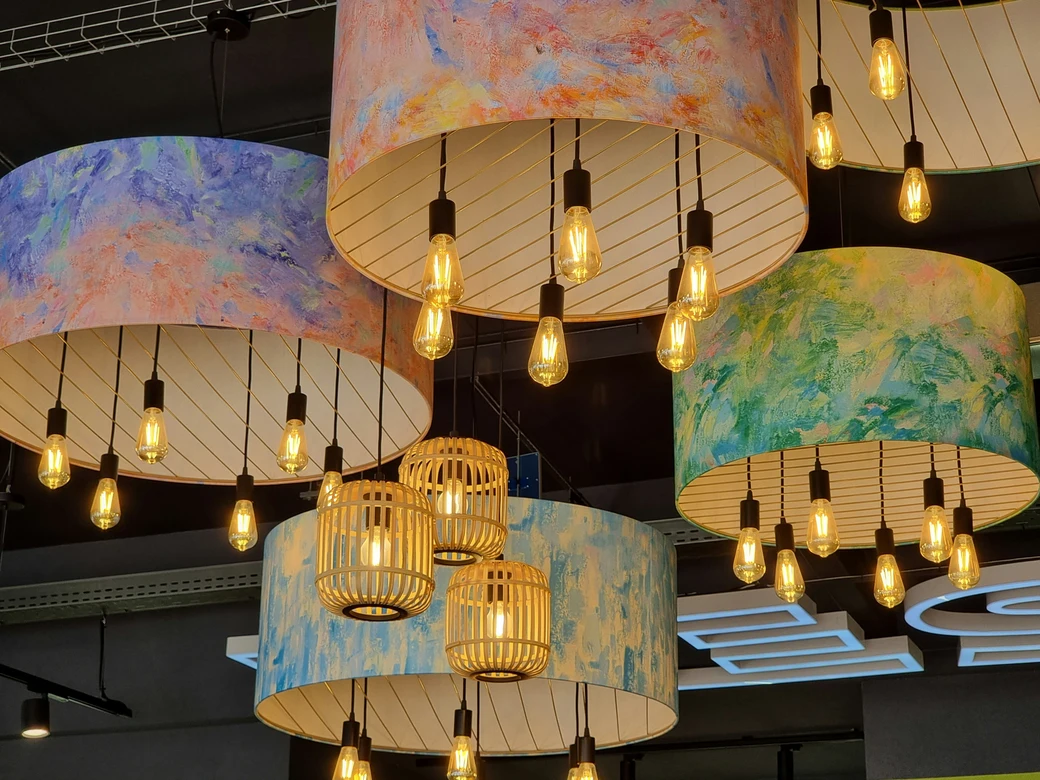Lighting isn’t just about visibility—it’s the silent designer of your living room. The right living room lighting creates atmosphere, enhances comfort, and highlights your home’s best features. Whether you’re reading, entertaining, or relaxing, a layered lighting plan can completely transform your space.
In this guide, we’ll show you how to plan lighting that supports mood, function, and style, without blowing your budget.

1. Start with a Layered Lighting Strategy
A balanced lighting plan uses three layers: ambient, task, and accent. Each plays a unique role in a functional and beautiful living room lighting setup.
Here’s how to think in layers:
- Ambient lighting for general illumination,
- Task lighting for reading or focused activities,
- Accent lighting for highlighting art or architectural details,
- Natural lighting as a foundational layer.
Combining these layers adds depth and flexibility to your space.
2. Use Ambient Lighting as the Foundation
This is your main light source—usually overhead. While it fills the room with light, it shouldn’t be harsh or overpowering.
Common ambient lighting options:
- Flush-mount or semi-flush ceiling fixtures,
- Modern chandeliers or pendant lights,
- Recessed lighting in larger spaces,
- Dimmable smart bulbs for control.
Good ambient living room lighting should feel natural, not clinical.
3. Add Task Lighting Where You Need It Most
Task lighting ensures you can comfortably read, work, or relax without straining your eyes. Focus this layer on activity zones.
Useful task lighting includes:
- Table lamps with soft shades beside seating,
- Adjustable floor lamps near reading chairs,
- Swing-arm sconces over side tables or built-ins,
- LED strip lights under shelves or behind TVs.
The best task lights are functional but also elevate the look of your space.
4. Use Accent Lighting for Atmosphere
Accent lighting adds mood and visual interest. It draws the eye to specific features and adds a designer feel to your room.
Accent ideas:
- Wall sconces to highlight architectural elements,
- Picture lights over artwork or framed photos,
- Backlighting for bookshelves or niches,
- Floor uplights behind plants or sculptures.
Accent living room lighting works best in contrast with shadows and soft light zones.
5. Match Lighting Temperature to Mood
The color temperature of your lights influences the feel of your living room. Choosing the right warmth or coolness affects comfort and perception.
Temperature guide:
- 2700K–3000K (warm white) for a cozy, relaxing vibe,
- 3500K–4100K (neutral white) for balanced task lighting,
- 5000K+ (cool white/daylight) for high-activity areas.
Warm lighting is ideal for most living room lighting setups that emphasize comfort and downtime.
6. Work With Natural Light
Before you plan your artificial lighting, maximize what nature gives you. Natural light is flattering, cost-free, and helps regulate mood and energy.
Make the most of it by:
- Using light-filtering curtains or sheers,
- Placing mirrors to reflect daylight deeper into the room,
- Keeping window treatments minimal,
- Avoiding furniture that blocks key windows.
Combine natural and artificial living room lighting for a seamless day-to-night experience.
7. Consider Style and Fixtures as Décor
Lighting is functional—but it’s also a design element. Choose fixtures that complement your overall decor and add visual structure to the room.
Great fixture ideas:
- Mid-century modern floor lamps for minimalist spaces,
- Woven pendants for a cozy organic look,
- Sculptural sconces for visual drama,
- Matte black or brass finishes for timeless appeal.
Don’t treat lighting as an afterthought. In modern interiors, lighting is the furniture.
Final Thoughts
The right living room lighting is part science, part art. When you layer ambient, task, and accent lighting intentionally—and match them to your style—you get a living room that works beautifully in every situation.
Whether you’re creating an inviting space for guests or a cozy retreat for yourself, lighting sets the tone. Think in layers, control with dimmers, and design with warmth—and you’ll create a space that glows with intention.
Ready to transform your space with the power of lighting?
Start your design journey by exploring more lighting-focused tips on Designs24hr. Check out our Living Spaces category for expert advice on mood-setting layers, lighting psychology, and fixture ideas that bring style and warmth to your living room.







